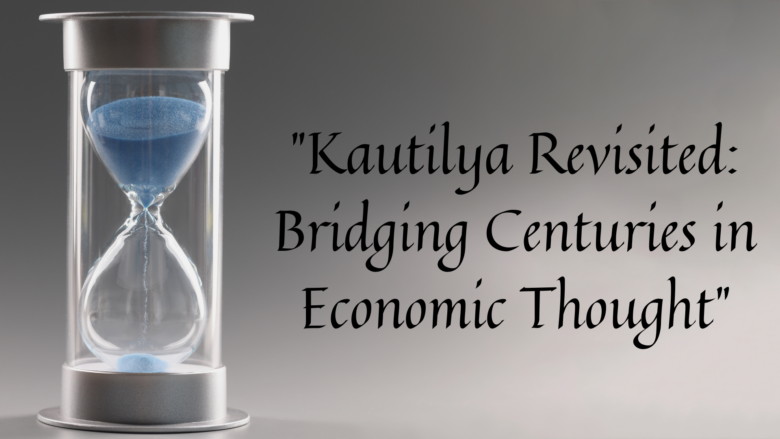Welcome back to our series where we compare the ancient economic wisdom of Kautilya with modern economic thinkers. In this second installment, we will examine how Kautilya’s teachings compare with the ideologies of Milton Friedman, Amartya Sen, and John Maynard Keynes.
Kautilya: A Synthesis of Ethics and Economics
Kautilya, the architect behind the Mauryan Empire’s rise, authored the Arthashastra, a comprehensive manual on statecraft, economics, and military strategy. His work is a testament to the integrated approach to governance, where economic policies are interwoven with ethical considerations.
Milton Friedman: The Champion of Free-Market Capitalism
Milton Friedman, a Nobel laureate, is best known for his strong advocacy of free-market capitalism. He argued for minimal state intervention in the economy, emphasizing the efficiency of the free market.
Comparing Perspectives:
- Market vs. State: Friedman’s belief in minimal government intervention starkly contrasts with Kautilya’s detailed approach to state involvement in economic activities. While Friedman champions free markets, Kautilya advocates for a more regulatory role of the state in economic matters.
- Economic Freedom: Both, however, appreciate economic freedom, albeit in different contexts. Friedman sees it as freedom from state intervention, whereas Kautilya views it as a structured freedom within the bounds of ethical state governance.
Amartya Sen: Beyond Economics, Towards Human Development
Amartya Sen, known for his work on welfare economics, emphasizes human capabilities and freedom. His approach transcends traditional economic metrics, focusing instead on human development and social justice.
Comparing Perspectives:
- Welfare and Human Development: Kautilya and Sen both focus on the broader aspects of human welfare. Kautilya’s emphasis on the ruler’s responsibility towards the prosperity and well-being of his subjects resonates with Sen’s focus on enhancing human capabilities and freedoms.
- Ethics in Economics: Both thinkers integrate ethical considerations into their economic theories. While Sen stresses moral principles in the context of contemporary socio-economic issues, Kautilya incorporates ethical governance as a cornerstone of effective statecraft.
John Maynard Keynes: The Architect of Modern Macroeconomics
John Maynard Keynes, known for his revolutionary ideas in economics, advocated for government intervention, especially fiscal and monetary policies, to mitigate economic downturns and stabilize economies.
Comparing Perspectives:
- State Intervention: Keynes’ advocacy for state intervention in the economy to manage cycles of boom and bust finds a parallel in Kautilya’s proactive economic planning and state involvement in market regulation.
- Economic Stability: Both Keynes and Kautilya understand the importance of economic stability for the welfare of the populace. While Keynes focuses on short-term stabilization through government spending, Kautilya’s approach encompasses broader economic, social, and ethical dimensions.
Conclusion
This comparative analysis highlights Kautilya’s remarkable foresight in economic thought. His principles, though ancient, bear relevance and show striking similarities to the ideas of modern economists like Friedman, Sen, and Keynes. The juxtaposition of his ancient wisdom with modern economic theories underscores the timeless nature of his insights.
In the final part of our series, we will continue our exploration, comparing Kautilya with other modern economic thinkers. Stay tuned for more insights into the convergence of ancient wisdom and contemporary economic thought.
Author’s Note: This analysis is an attempt to draw parallels and contrasts between different economic philosophies across ages. The interpretations provided aim to stimulate intellectual curiosity rather than assert historical accuracy.
Note: This blog is part 2 of a three-part series. Stay tuned for the concluding part.
About the Author: G.C., an enthusiast of economic history seeks to bridge the gap between the ancient and the modern, providing unique insights into the evolution of economic thought.
References:
- “Arthashastra” by Kautilya.
- “Capitalism and Freedom” by Milton Friedman.
- “Development as Freedom” by Amartya Sen.
- “The General Theory of Employment, Interest and Money” by John Maynard Keynes.
- Academic research and historical sources on Kautilya’s economic principles.
© EcoSociosphere. All rights reserved. Reproduction, distribution, or transmission of this publication, in any form or by any means, is prohibited without prior written permission from the publisher.
Connect with Us:
EcoSociosphere – Bridging Economic Thought Across Time.





Comments
Pingback: Unveiling the Genius of Kautilya: A Comparative Analysis with Modern Economists – Part 1 - ecosociosphere
Thanks for sharing. I read many of your blog posts, cool, your blog is very good.
Your article helped me a lot, is there any more related content? Thanks!